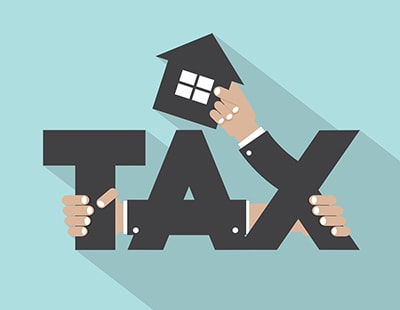
A record £8.2 billion was paid in Capital Gains Tax in 2017/18 - over £1 billion more than the year before.
The figures comes from private wealth law firm Boodle Hatfield which has analysed HM Treasury’s CGT figures for 2017-18, the latest available data.
The yield means that the government’s CGT income has risen by 130 per cent in just five years.
Boodle Hatfield says the overall rise has been driven by increasing asset prices, including both equities and property.
The FTSE 100 rose a cumulative 24 per cent from January 2016 to December 2017 while the average UK house price increased 7.3 per cent from £197,044 to £211,433 over the same period according to the Nationwide.
Recent restrictions on tax relief for buy to let investors, introduced in April 2017, may also have encouraged more owners of investment properties to sell and triggered a rise in CGT yield.
Until April 2017, owners of rental properties could deduct the full value of their mortgage interest payments from their rental income before paying tax on it. This relief is gradually being taken away by HMRC – at present only 25 per cent of the mortgage interest payments can be deducted, falling to zero in April 2020.
Boodle Hatfield says that this has made BTL investment significantly less attractive for some individuals, resulting in some landlords reducing the size of their portfolios.
Geoffrey Todd, Partner at Boodle Hatfield, says: “HMRC seems to have reaped the benefit of the Treasury making buy-to-let a much less attractive investment – twice over. As well as reducing the amount of tax relief the government gives to property investors, the changes to buy to let taxation seem to have pushed some landlords into selling properties and driven up CGT yields too.”
He says that with asset values having risen sharply in recent years, CGT is becoming an increasingly important source of income for HMRC. Its income from CGT has more than doubled in the past five years.


























Join the conversation
Jump to latest comment and add your reply
Heads HMRC win and Tenants lose,
Tails HMRC win and Tenants lose.
The waterbed effect.
The numbers in TA as a result of LL being forced to sell up have exponentially increased costing the Govt far more in additional TA rent costs.
Plus once the LL property is sold there is a permanent loss of revenue as very few LL sell to other LL.
Govt would find it is actually costing far more in lost revenue than one off CGT receipts.
But then the Treasury DOESN'T consider actual economic effects of it's bonkers pernicious policies like S24 and CGT etc.
Once all the CGT has been taken from LL forced to sell up or downsize there will not be anymore CGT coming for decades.
It will probably take 40 years for CG to increase to the amount it has over the past 30 years.
This CGT scam is a one windfall.
Govt will not have such a honeypot to raid in the future.
The PRS simply won't be of a size where Govt can steal such taxes if they can manage to force LL to sell up.
It is simply not worth being s leveraged sole trader LL anymore.
Personally I will be making 14 tenants homeless as I sell up and I won't be selling to a LL.
I want top retail price!
Govt seems hellbent on destroying the PRS and as the Irish Govt have discovered after their about turn on their disastrous S24 equivalent trying to persuade LL to return to the PRS is far from easy.
This is why there is currently a housing crisis in Ireland.
There is simply insufficient rental properties caused by the idiotic Govt policies of taxing LL turnover rather than profits.
This with the Irish S24 NOT being retrospective still devastated the Irish PRS
Much worse will be occurring in the UK PRS where S24 IS retrospective!
Please login to comment